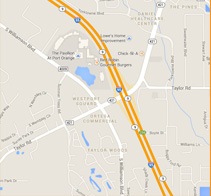News Archives
Sea turtle nesting season starts May 1 in Volusia County.
Written by Anthony Bicy
Belden Communications News
Sea turtle nesting season begins May 1, and already there are three Leatherback Turtle nests located in Volusia County, with one of them (discovered on April 2) being the earliest recorded sea turtle nest on county-managed beaches. With water temperatures warming up quickly, hundreds of sea turtles will be emerging from the surf to lay eggs on the beach in the next few months.
Sea turtle nesting season runs through October 31, with 400 to 500 nests laid throughout Volusia County in a typical year. Last year was the fourth-highest nesting season on record, with 780 nests counted.
“We want to make Volusia County beaches safe, inviting places for humans and sea turtles,” he said. “We encourage residents and visitors alike to respect our wildlife. Let the night provide the light and keep our beaches clean, dark, and flat.”
According to a release, Nesting season is when sea turtles come from the sea to lay eggs on the beach. After incubating in the sand for about two months, tiny hatchlings will break free of their eggshells and make a treacherous crawl to the ocean, dodging predators, holes, trash, and beach furniture. Tragically, some will also be led into harm’s way by beachfront lighting.
Officials estimate that only about one in 1,000 to 10,000 hatchlings will make it safely to sexual maturity, which may take 10 to 25 years.
“Artificial lighting is a human-made threat we can correct with minimal effort,” he added. “Bright lights can discourage adult female sea turtles from nesting and confuse hatchlings, leading them away from the ocean and into streets or storm drains. By simply redirecting lights away from the beach and turning them off, beachfront residents can allow natural moonlight and starlight to guide nesting females and hatchlings and keep them out of danger.”
Oceanfront property owners must shield, redirect, or turn off lights from shining on the beach.
Residents may also help by applying to the following dos and don’ts list:
- Do not touch or disturb sea turtles or their nests. Hatchlings must make their way to the ocean.
- Do not disturb the dune system or plants. Use designated beach access points and do not walk on the dunes.
- When driving at the beach, use the designated traffic lanes and parking areas. Beach driving access hours are from 8 a.m. to 7 p.m. throughout the nesting season, tide permitting.
- Do not use flash photography at night.
- Do not use cell phones to light your way at night.
- Use only red LED flashlights; they are less visible to turtle eyes.
- After a day at the beach, flatten sandcastles, fill in holes, and take your chairs and equipment home. This is an easy way to reduce obstacles faced by sea turtles.
- Dispose of trash and recyclables in proper receptacles. Trash left on the beach can attract predators that impact sea turtle nests.
- Do not use fireworks. They are prohibited on the beach and can be disruptive to turtles.
- If you see a nesting adult sea turtle or hatchlings making their way to the ocean, admire them from a safe distance. Stand far away, remain calm, and quietly enjoy this experience. If a turtle appears to be in immediate danger, notify a lifeguard or Beach Safety officer or call the Florida Fish and Wildlife Conservation Commission at 888-404-3922.
For more information, call (386)238-4668 or visit www.volusiaseaturtles.org.
Bookmark & Share
User Comments
Be the first to comment on this post below!
Previous Article
Most Popular Articles
- DUI Checkpoint to Run This Weekend on Dunlawton
- Some City Residents Advised to Boil Water Through Wednesday
- Detectives Believe Body Found in Daytona is that of Murder Suspect
- Mosquito-Borne Illnesses Increase in Volusia County
- Port Orange Woman Wins $750,000 On Scratch Off
- Police Seeking Person of Interest in Port Orange Death
- Port Orange Fire Department Deploys to Florida Panhandle
- Just Us Girls Event to Feature Charity Auction for Murder Victim?s Family





